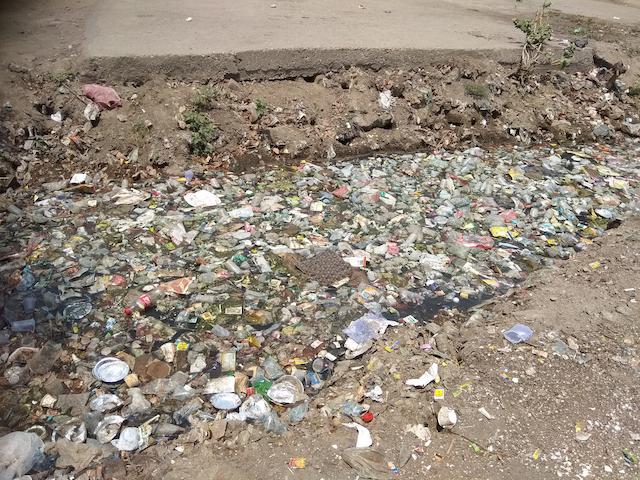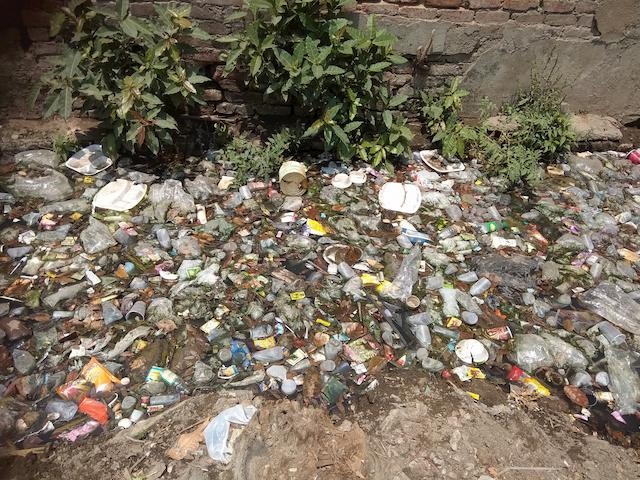An open drain is an open channel, mostly found in urbanized areas, used to discharge rainwater. Rainwater collected by the channels is often directed to rivers or other water sources.
Drains serve a good purpose in preventing flooding, but when they lack covers, as is the case for open drains, solid and domestic wastes collect in them and may lead to blockage. As a result, they threaten the people living in the surrounding areas.
According to the information about the international distribution of open drains, most are found in middle and low-income countries. If the open drains are left unchecked, they can be a health hazard to the neighboring population, and that’s because they turn into a breeding ground for disease-causing parasites and other microorganisms.
It worsens when the rainy season begins, as these drains can rapidly spread water-borne diseases and infections. This article, therefore, seeks to further explain the dangers associated with open drains and possible solutions.
Harmful Effects of Open Drains
Some of the harmful effects of open drains include:
1. Spread of Diseases
Control of water-related diseases depends on the effectiveness of removing excess surface and subsurface water. Health issues related to open drainages are broad and are reported as a result of exposure to agrochemicals, fecal waste, and water-related borne diseases.
Diseases caused by bacteria, protozoa, and viruses, for instance, are transmitted by agents that act as intermediate hosts, which usually thrive in waterlogged conditions provided by open drains. A common disease-causing agent associated with open drains is the female Anopheles mosquito, causing malaria.
Snail is another great example that commonly acts as an intermediate host for schistosomiasis. Some insects, such as houseflies, can also act as vectors of diseases such as cholera and typhoid. It is, therefore, very common for water-borne infections in areas with open drains containing infected fecal matter.
2. Build-Up of Toxic Chemicals
Surface runoff and leaching water from agricultural fields treated with pesticides and toxic chemicals from industries can easily find their way into the open drains. The resultant effect is the build-up of toxic chemicals in the water flowing in the drain, which threatens the survival of neighboring residents.
Suppose the contaminated water comes into contact with the town’s water source, for example.
In that case, it will be contaminated with hazardous chemicals that may lead to adverse health effects such as liver damage, predisposition to certain cancers, birth defects for pregnant women, and development problems in children.
People may also increase contamination by disposing waste chemicals and other toxic materials into the open drains.
3. Road Deterioration
Open drains often get clogged due to deposits of silt and other solid substances thrown into the drain. During the rainy season, the clogs result in flooding that, in turn, destroys roads. To make matters worse, the rate of road deterioration increases with an increase in granular moisture content.
Besides, most open drains are located alongside major roads within urban areas, and if they are poorly maintained, the water may overflow onto the roads. The excess moisture extensively reduces the shear strength of the unbound materials and causes differential swelling on the subgrade soils, ultimately weakening the roads and pavements.
Other effects include stripping off the asphalt, cracking roads and pavements, thaw weakening, and frost-heaving.
4. Contamination of Water Sources
Open drains are bound to receive domestic wastewater and stormwater mixed with solid wastes, clinical wastes, silt, chemical waste, and other contaminants that finally discharge into main water bodies such as streams, rivers, lakes, and oceans.
This contaminates the water sources and may make the water unfit for human consumption if proper water treatment is not done. Stagnant water in poorly constructed open drains can also lead to contamination of groundwater.
5. Breeding Sites of Mosquitoes
Open drains may often contain stagnant water due to their open nature. This encourages the build-up of silt and waste materials that clog the drainage channels in the long run.
Such conditions create breeding sites for disease-carrying vectors, especially mosquitoes – known to thrive in open drains containing stagnant water.
Mosquitoes pose an adverse health risk concerning the spread of malaria, dengue fever, yellow fever, and chikungunya. In India, 88% of dengue fever infections spread by the Aides mosquito are due to stagnant water in open drains.
6. Bad Odor and Unsightly
Dirty stagnant water in open drains has a bad odor, making it very uncomfortable and unsightly for people living around them. They can also cause inconveniences, especially in neighborhoods when children play near the infected water.
7. Cause Unnecessary Traffic Jam
The poor drainage system, especially due to open drains, causes water logging problems on major roads in urban areas of developing countries, problems that lead to the deterioration of roads and flooding. This causes disruption of normal urban traffic in the rainy seasons and when the city workers try to repair the open drains to prevent flooding.
8. Normal Life Disruption
Poor drainage systems hamper the daily life of city dwellers. The inadequate drainage system and blocked open drains fail to convey the stormwater effectively, leading to flooding and waterlogging in low-lying areas.
The clogged water disrupts the life of the inhabitants living around such areas. Sometimes, due to poor drainage, traffic accidents are common when the roads are submerged.
9. Destruction of Houses
The flood and waterlogging from blocked open drains can also pose a serious threat to the neighboring houses.
The excess water causes the oversaturation of soils that swell, destroying the foundations and reducing their stability. It will cause cracks in walls, damage landscape, and cause premature aging and discoloration of the exterior brick and the concrete.
10. Soil Erosion
Open drains can cause soil erosion, especially in rural areas. Water traveling at high speed in drains will carry away soil and silt. This can lead to excessive erosion of the sides of the roads, making them narrow and impassable for wide vehicles.
11. Affects Agriculture
Open drains in agricultural lands direct excess water away or bring in water for irrigation purposes. Poorly maintained drains would cause flooding, which causes enormous damage to the agricultural land and the irrigation network.
But that’s not all — excess water on farms can also cause the leaching of essential minerals. This affects the quality of the soil, in turn reducing the crop yield.
Diseases Caused by Open Drains
Open drains have hazardous effects on health in the following ways:
- Open drains provide breeding sites for disease vectors. Because of this, some diseases are more common in the wet season than in the dry season. Household wastewater may also contain pathogens that can pollute groundwater sources, increasing the risk of diseases such as lymphatic filariasis.
- In areas where sanitation is poor, water runs through the open drain carrying feces and contaminates water sources. This contributes significantly to the spread of diseases such as typhoid and cholera and may increase the likelihood of contracting worm infections from soil contaminated by feces.
- Open drains give out a foul smell, which affects our health.
- When insects like houseflies sit on the sewage being drained in the open drain, they carry pathogens. When they sit on food material, those pathogens enter our bodies to cause diseases like diarrhea, dysentery, and other stomach infections.
- Open drains cause flooding in the area. Flooding itself may displace populations and lead to further health problems. Sometimes, when there’s a clog, the sewage enters our compounds to spread diseases.
- Drinking water contaminated by sewage also causes diseases. Where there are leakages in drinking water pipelines, and sewage is mixing in it from open drains, or those are too close to drinking water supplies so that effluent soaks through the soil into the water supply. All water-borne diseases like jaundice, frequent fever, and diarrhea cause health hazards.

That aside, let’s examine some diseases from open drains caused by germs.
They include:
Bacterial:
- Salmonellosis
- Shigellosis
- Diarrhea
- Trachoma
- Melioidosis
Viral:
- Gastroenteritis
- Hepatitis A
- Diseases caused by parasites:
- Giardiasis
- Dwarf tapeworm infection
- Threadworm infection
- Hookworm infection
- Strongyloidiasis
Effective Solutions to Open Drains
Some of the effective solutions to current open drain problems include:
1. Combined Sewers and Combined Drains
In urban and rural settings, as well as flood-prone areas with paved village roads, integrating open drains into the sewerage system and covering them can enhance water management. This involves burying the drains and installing inlet chambers along roadsides to facilitate stormwater flow.
The drainage system should efficiently channel water to either a sewage treatment plant or a nearby watercourse. To prevent overloading, a well-planned integration with the sewage system is crucial. Additionally, contingency stormwater drains may be necessary to redirect excess water to ponds or storage pools
2. Constructing Water Drains in Farms
Open drains in irrigated fields are considered the leading cause of schistosomiasis among farmers around such areas. Therefore, there is a need to design and construct properly lined and graded drains with self-draining systems.
Weeds must also be continuously removed from the drainage system to minimize wear and tear and the breeding grounds for the snails responsible for schistosomiasis infections.
3. Community Education and Participation
The community living around areas with open drains should be educated on the dangers of disposing of domestic wastes, among other contaminants and toxic chemicals in this drainage system. Proper disposal methods should be taught, as well.
The education should also encompass community participation in policy-making and decision-making in addressing open drain problems. Community participation can be done through public hearings, reports, social surveys, workshops, and public meetings.
4. Urban Drainage Planning and Review of Drainage Designs
In the city areas, open drains are mostly a result of poor urban design and planning that restricts the construction of spacious and well-covered drainage systems for channeling stormwater.
Some urban areas also highly depend on conventional open drainage designs. This calls for such urban areas to review their urban planning and housing designs.
For example, properly designed and planned open drains should be covered with concrete slabs to minimize diseases and infections.
5. Urban Housing and Planning Legislation
Urban housing and planning legislation should be enacted to curb the harmful effects of open drains.
Essentially, emphasis should be placed on policies focused on establishing minimum standards for constructing urban draining systems as per the sustainable urban drainage system requirements.
6. Maintenance
The existing open drains should be maintained regularly to reduce the harmful effects of infections, diseases, and flooding. The drains that contain solid and silt deposits should be cleaned and unblocked. This practice should be done regularly to prevent future blockages and flooding.







